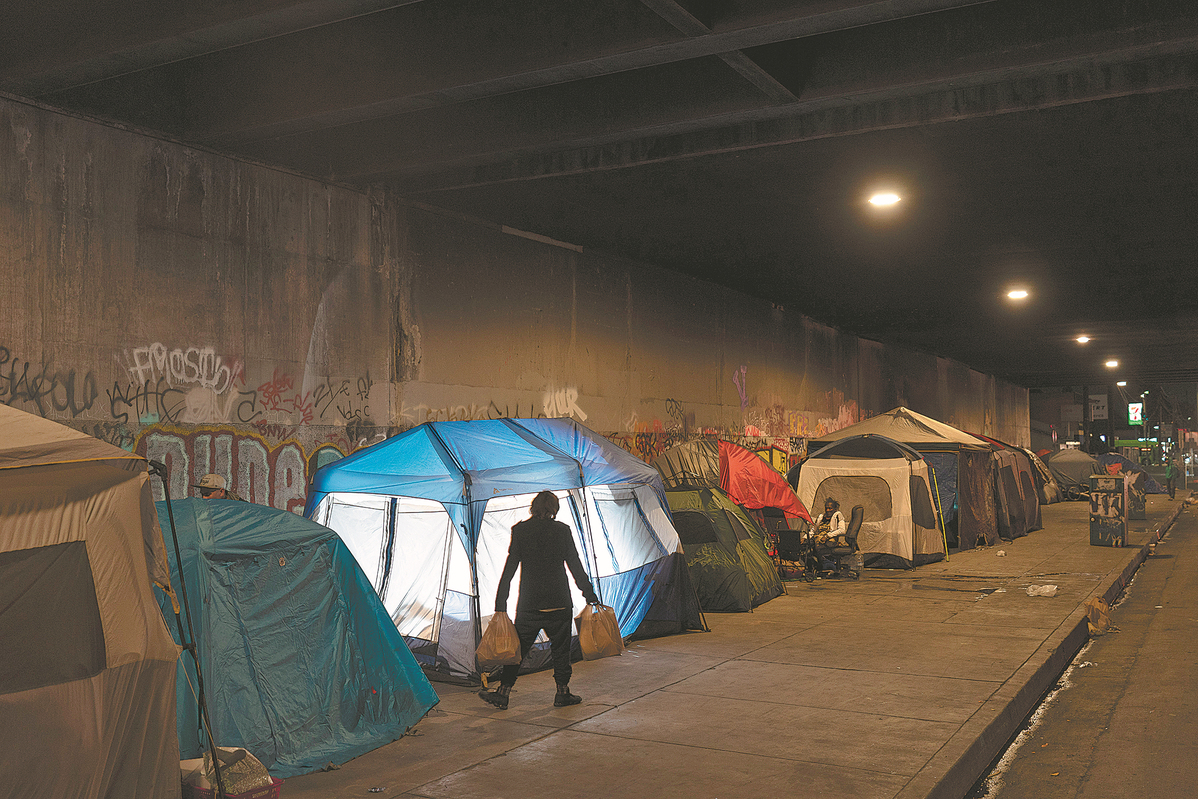US cities remain clueless as thousands go homeless

Upward trend

"In the immediate aftermath of COVID, we did not see a large increase in homelessness as evidenced by the 2022 homeless count," he said. "The 2023 estimate points to a resumption of a continuous upward trend over the past 10 years with the homelessness population doubling during that time.
"COVID-19 pandemic aid, including cash payments and an eviction moratorium, interrupted this trend, but growing income inequality and a housing market that can't accommodate low-wage earners (have) resulted in a resumption of this upward trend."
About 27,000 people living on the streets in Los Angeles have been there for more than a year, the count showed, and much like New York, many are suffering poor health, mental health woes and substance abuse. Around 25 percent of homeless people said they had severe mental illness, and 30 percent said substance abuse was an issue, officials said.
The racial makeup of those in homeless shelters was about 43 percent Latino, 31 percent black, 24 percent white and 2 percent Asian.
Many workers in other areas in California, such as Silicon Valley, could not put food on the table while paying rent after a loss of income amid the pandemic, according to local food banks. Tech companies, many of which have headquarters in the state, also had massive layoffs.
Diane Baker Hayward, a spokeswoman for Second Harvest of Silicon Valley in California, one of the largest food banks in the US, said the aftermath of the pandemic put a huge strain on families that had to turn to food banks.
Second Harvest serves people in San Jose, Santa Clara and San Mateo counties, including Silicon Valley and the San Francisco Peninsula.
"This high level of need was due in large part to the very high cost of housing in Santa Clara and San Mateo Counties — what many refer to as Silicon Valley," Hayward told China Daily.
"When the pandemic hit, many people lost their jobs or had hours cut at work. Many of the people we are seeing now have never received food assistance before."
Mayor Bass said she and her team have moved 14,000 people off the streets in the first six months of this year. At least 30 percent, or 4,332, got permanent housing, and a further 10,049 went into interim housing from December to May.
However, Henwood believes that to solve the problem in the long run, "more needs to be done at every level of government".
"A recent report provided an estimate that the state of California needs to commit $6.9 billion to affordable housing annually for the next 12 years to address homelessness when it currently only commits $1.2 billion to affordable housing," he said.


















